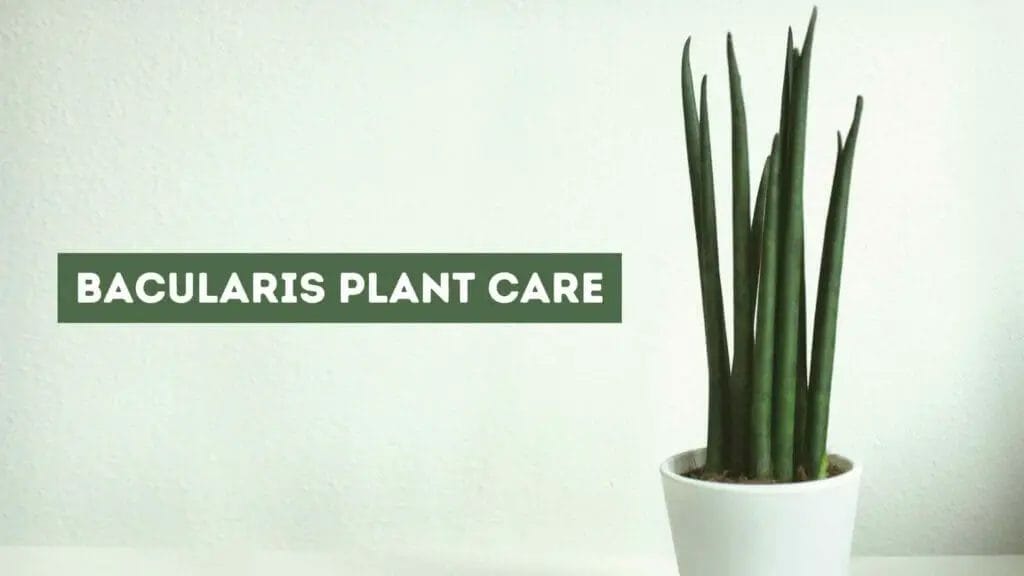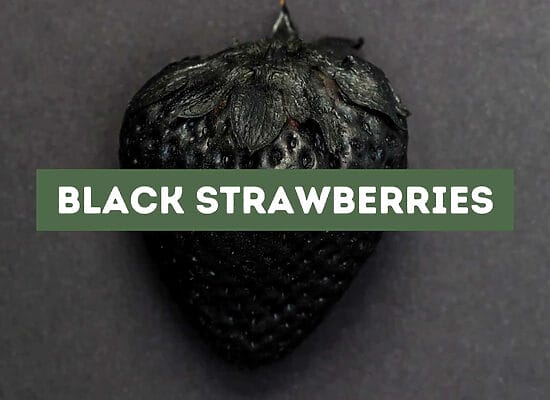
Bacularis plant care might seem intimidating at first, but with the right guidance, you’ll find that it’s easier than you think. The Sansevieria Bacularis, also known as Dracaena Bacularis, is a fascinating succulent with a slow growth rate and drought-tolerant nature, making it the perfect addition to homes or offices craving a touch of greenery. Let’s dive into how to properly take care of this resilient plant.
Key takeaways:
- Sansevieria Bacularis is a succulent native to west-central tropical Africa.
- It can grow up to 4 feet (1.2 meters) tall indoors and prefers USDA Hardiness Zones 10 and 11 outdoors.
- Proper lighting, watering, potting mix, and fertilization are crucial for its care.
- Placement in indirect light and avoiding intense sunlight is essential for vibrant and healthy leaves.
- Maintain temperatures between 65 to 75°F (18 to 24°C) for optimal growth.
- Use a well-draining soil mix with a neutral pH to prevent overwatering.
- Water the plant about every other week during the growing season, adjusting as necessary.
- Sansevieria Bacularis is toxic if ingested and should be kept out of reach of pets and children.
- The plant provides air purification, low maintenance, and pest resistance benefits.
- Propagation can be done through division or leaf cuttings.
- Address common problems such as pests, rot, and overwatering.
- Prune and repot as needed to maintain a healthy and balanced plant.
- The Mikado variety of Sansevieria Bacularis is visually striking and has specific care requirements.
Bacularis Plant Overview
Is Sansevieria Bacularis A Succulent?
Yes, the Sansevieria Bacularis, also known as the Bacularis Snake Plant, is a perennial stemless succulent plant native to west-central tropical Africa. This unique plant species is prized for its tall, slender, dark green, cylindrical leaves, making it a perfect addition to any houseplant collection.
How Big Do Sansevieria Bacularis Grow?
Sansevieria Bacularis can grow quite tall for a houseplant, with individual leaves reaching up to 4 feet (1.2 meters) in height and an overall width of about 1 foot (30 centimeters). This impressive size can make it a great statement piece in your home. However, keep in mind that growth will be slower indoors than in its natural habitat.
Is Bacularis an Indoor or Outdoor Plant?
Bacularis is highly adaptable and can thrive both indoors and outdoors. As an indoor houseplant, it does well in containers thanks to its lowlight and low-maintenance requirements. Outdoors, it can be grown in well-draining soil with a neutral pH, preferably in USDA Hardiness Zones 10 and 11. Just be sure to keep it in a spot that can accommodate its eventual height!
Is the Sansevieria Bacularis poisonous?
Yes, like many other Snake Plant species, the Sansevieria Bacularis contains toxins that can be harmful to pets and humans if ingested. Keep this plant out of reach from curious pets and children, as the ingestion can cause symptoms like nausea, vomiting, and diarrhea.
Bacularis Plant Benefits
Not only does the Bacularis Snake Plant add a touch of visual interest to your living space, but it also provides some lovely benefits:
- Air purification: Just like other Snake Plants, the Sansevieria Bacularis helps clean your indoor air by removing pollutants like formaldehyde, xylene, toluene, and nitrogen oxides. Moreover, it converts carbon dioxide into oxygen during the night, making it a great bedroom companion!
- Low maintenance: This houseplant species is famously resilient, tolerating infrequent watering, low light conditions, and temperature fluctuations. A perfect choice for beginners or busy plant owners!
- Pest resistance: Bacularis plants have fewer problems with pests compared to other houseplants, making them easier to maintain in pristine condition. Just remember to clean its leaves occasionally to prevent any possible infestations.
So go ahead, and enhance your living environment with the remarkable Sansevieria Bacularis!
Sansevieria Bacularis Care Guide
Growing a Sansevieria Bacularis can be a rewarding experience for any plant enthusiast. By following these essential tips in each key aspect of plant care, your Bacularis will thrive in your home or garden.
Light Conditions
Sansevieria Bacularis enjoys bright, indirect sunlight. So place your plant near a window where it can receive plenty of filtered or diffused light. Avoid direct sunlight, as the intensity may cause damage to the leaves. If you’re struggling with access to natural light, you can use a grow light to maintain healthy growth.
Watering
When it comes to watering your Sansevieria Bacularis, less is more. Water your plant roughly once a week or when you notice the potting mix beginning to dry out. Over-watering can lead to root rot, so be careful not to let the soil become too wet. Remember, consistency is crucial — try to let the soil dry out (but not completely) between waterings.
Pro Tip: Keep the water temperature above 55 degrees Fahrenheit (13 degrees Celsius) to avoid shocking your plant with cold water.
Potting Mix and Drainage
A well-draining soil with a neutral pH is ideal for your Sansevieria Bacularis. One way to achieve this is by using a mix of:
- 50% potting soil
- 25% perlite
- 25% sand
To ensure proper drainage, use a pot with drainage holes. Additionally, loosen the soil regularly with a bacteria-free tool to prevent compaction and allow the roots to grow freely.
Fertilizing
Your Sansevieria Bacularis will benefit from regular fertilization. Use a balanced, water-soluble fertilizer diluted to half strength, and apply it during the growing season (spring and summer). It’s best to fertilize every month, but if you notice the plant is growing at a slower rate, you can adjust the frequency accordingly.
Propagation Methods
Division
When propagating your Bacularis plant, utilizing the division method can be beneficial. This allows you to maintain the mother plant’s appearance. To start, gently remove the plant from its pot and lightly shake off any excess soil1. Examine the mother plant’s roots for diseases and rot, and grab a disinfected knife to separate root clumps from the parent plant2.
When planting your new divisions, choose a well-draining potting mix to provide the optimal environment for growth. As a tip, keep the new plants in bright, indirect light to encourage healthy growth.
Leaf Cuttings
Another fun and engaging method of propagating your Bacularis plant is through leaf cuttings. To do this, simply cut off a whole leaf or divide a single leaf into several sections3. Then, prepare the following:
- A shallow pot
- A soil mix that contains equal parts soil and perlite3
Pot the cut leaf in the pot, ensuring that it maintains the same leaf orientation3. Pro-tip: Bacularis cuttings can be successfully propagated even if they are placed upside down, although it may take a bit longer to establish.
Keep the pot in bright, indirect light and water sparingly – only enough to keep the soil slightly moist. In time, new plantlets will emerge from the leaf cuttings, eventually developing into a healthy Bacularis plant.
Remember to monitor the propagation process closely; your new plants will need tender care during their initial growth stages. It’s essential to strike a balance between providing enough water for the developing roots while preventing excessive moisture that could cause rot.

Preventing Common Problems
Caring for your Bacularis plant involves addressing some common issues that may arise during its growth. In this section, we’ll explore how to manage pests, prevent rot, and avoid overwatering to ensure your plant thrives.
Pest Management
Pests like spider mites can pose a threat to your Bacularis plant. Keep a close eye on the leaves and rhizomes to identify any infestations early on. To tackle these critters, you can:
- Wipe the leaves with a damp cloth to remove the pests.
- Spray your plant with a mild insecticidal soap or neem oil solution.
- Keep your plant’s surrounding area clean and free of debris.
Pro Tip: Introduce natural predators like ladybugs to your garden to help control mite populations.
Preventing Rot
Rot, especially root rot, can be a significant concern for Bacularis plants. To prevent this issue:
- Ensure proper drainage by using a well-draining soil mix and a container with drainage holes.
- Avoid letting the pot sit in standing water.
- Maintain a healthy watering schedule, allowing the soil to dry between waterings.
Monitoring the plant’s rhizomes can also help detect early signs of rot, enabling timely action, such as trimming the affected parts.
Avoiding Overwatering
Overwatering is a common cause of problems for Bacularis plants. To avoid this mistake:
- Allow the soil to dry out between waterings, checking not only the topsoil but also deeper layers. You can do this by inserting a clean chopstick into the soil.
- Water with moderation, aiming for a schedule of every 2 to 4 weeks, depending on the season and environment.
- Keep the plant in temperatures between 65 and 75°F (18 to 24°C), as this temperature range promotes healthier root and leaf development.
Pruning and Repotting
Taking good care of your Bacularis plant involves mindful pruning and timely repotting. In this section, we will guide you through essential steps and best practices to ensure your plant stays healthy and vibrant.
When to Repot
Typically, it’s time to repot your Bacularis plant when it becomes root-bound or requires more space to grow. This may happen every 2-3 years, but there’s no set rule for it. Keep an eye on its roots: if they start poking out of the drainage holes or circle the pot’s edges, consider repotting.
Pro Tip: Bacularis plants can tolerate being slightly root-bound, so don't rush into repotting too often. They tend to thrive in semi-cramped conditions, adding another level of convenience for plant enthusiasts like yourself.
How to Prune
Pruning your Bacularis plant helps promote new growth and maintain an attractive, balanced shape. Here’s how to go about it:
- Before you start, make sure you use a clean, sharp knife or pruning shears to prevent infections.
- Trim off any brown or yellow leaves, as well as any dead or damaged sections—this helps the plant focus its energy on healthy growth.
- Be careful not to cut into the healthy, green parts of the leaves while pruning; doing so may cause irreversible damage.
You can propagate your Bacularis plant by dividing it during repotting. To do this, follow these steps:
- Gently remove the plant from its original pot, taking care not to damage its roots.
- Divide the plant and its root ball into smaller sections using a clean knife or pruning instrument.
- Repot each new section in the same soil as the mother plant, giving it enough room to grow.
By meticulously pruning and repotting your Bacularis plant, you ensure its long-term health and enjoy its beauty for years to come. Remember, consistency and a little attention to detail are all you need to keep your Bacularis plant thriving.
Bacularis Varieties
Sansevieria Bacularis, also known as Dracaena Bacularis, is a popular and easy-to-care-for houseplant with several fascinating varieties. One of the most sought-after is the Sansevieria Bacularis Mikado, a stunning hybrid Snake Plant with unique characteristics.
Mikado’s distinct appearance sets it apart from other Bacularis varieties. Sporting dark green leaves that grow vertically, it forms an intriguing cylindrical shape that adds a modern, minimalist touch to any space. Be prepared to see your Mikado grow up to 3 feet (91 cm) tall!
Your Bacularis plant will thrive in temperatures between 65 to 75°F (18 to 24°C). However, make sure to keep it away from drafts and cold windows, as sudden drops below 60°F (16°C) can slow down its root and leaf development.
Being a hybrid Snake Plant, Mikado has inherited its parents’ low-maintenance nature. You won’t need to stress too much about humidity, as the plant adapts well to fluctuations within the 30 to 50% range. It’s always a good idea to have a hygrometer on hand to monitor the humidity levels in your home, ensuring optimal growth.
To enrich your growing experience, keep in mind these helpful tips when caring for your Bacularis Mikado. Don’t overfeed your plant – too much fertilizer can cause droopy leaves. Additionally, watering it every 12 days, should prevent overwatering and maintain a healthy plant.
FAQ: Bacularis Plant Care
What is a bacularis plant?
Bacularis is a perennial stemless plant that belongs to the Sansevieria species. It is commonly known as the snake plant.
Is the bacularis snake plant easy to care for?
Yes, the bacularis snake plant is an easy-to-care-for houseplant. It is a slow grower and has a hardy root system that doesn’t require a lot of watering or attention.
What are the essential tips for bacularis snake plant care?
To ensure optimal growth and health for your bacularis snake plant, you should provide good light conditions, water the plant once a week, and use a well-draining potting mix. Additionally, you can fertilize the plant every two to three months.
How often should I water my bacularis snake plant?
It’s time to water your bacularis snake plant when the soil at the bottom of the pot is fully dry. Generally, you should water the plant about once a week.
What are good light levels for bacularis snake plant?
Bacularis snake plants thrive in bright light conditions but can also tolerate lower light levels.
Can I leave my bacularis snake plant in direct sunlight?
While bacularis snake plants can tolerate some direct sunlight, it’s best to provide bright but indirect light to avoid scorching the leaves.
How can I check if my bacularis snake plant needs watering?
You can check the soil moisture level by inserting your finger about an inch into the soil. If it feels dry, it’s time to water the plant.
What type of fertilizer should I use for my bacularis snake plant?
You can use a balanced fertilizer with equal parts nitrogen, phosphorus, and potassium to promote healthy growth in your bacularis snake plant.
Can bacularis snake plants produce flowers?
Yes, bacularis snake plants can produce small white or greenish flowers on mature plants.
How do I prevent pests from infesting my bacularis snake plant?
To prevent pests, you should regularly inspect your plant for signs of infestation, avoid overwatering, and keep the entire plant clean from dust and debris. If necessary, treat any pests with an appropriate pesticide or insecticidal soap.
Sansevieria Bacularis, provide captivating visuals and lend a modern touch to your space. Treat it with care, ensuring it has the right temperature, humidity, and nutrient balance, and watch it become a point of pride in your plant collection.












